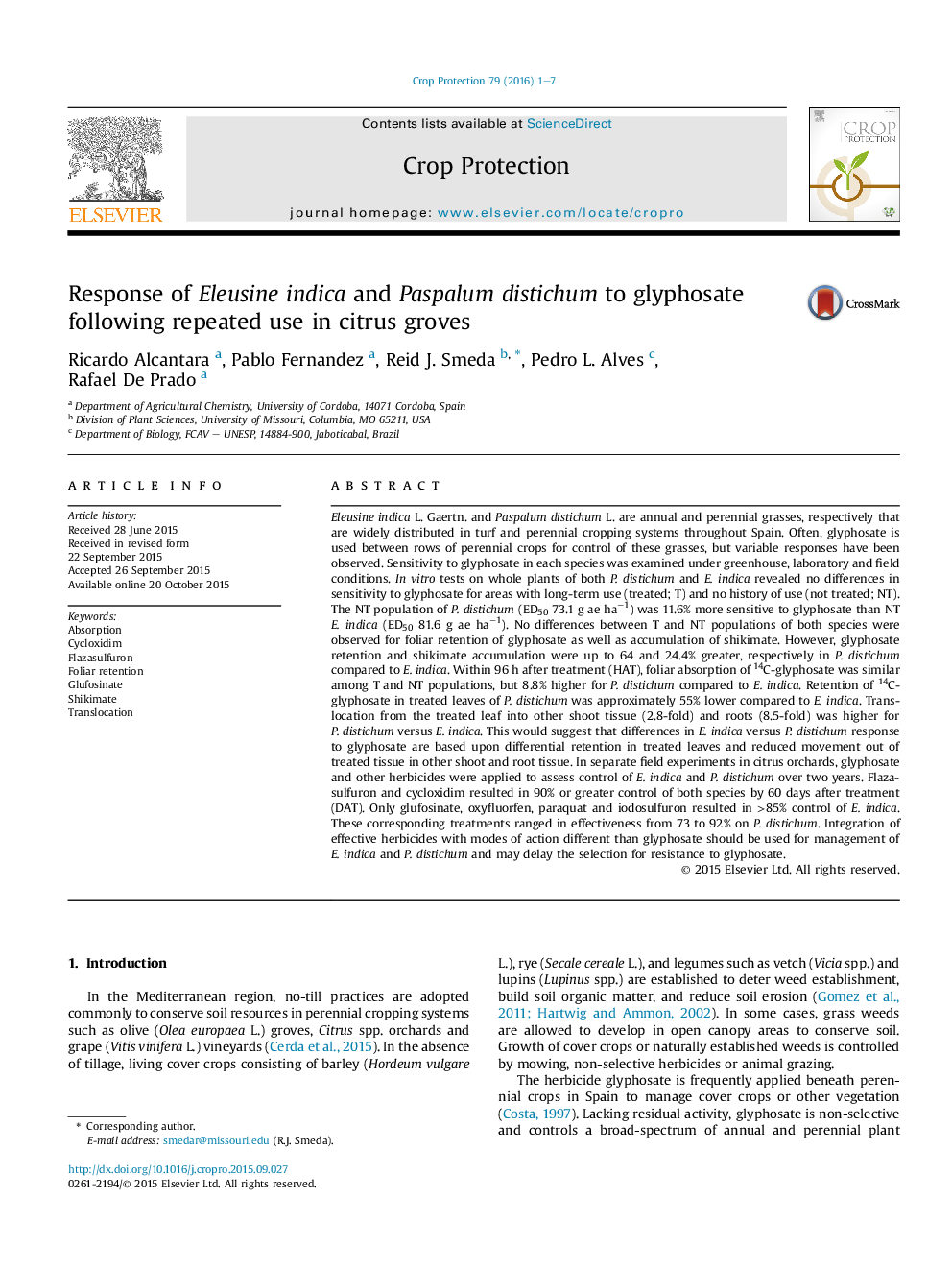| کد مقاله | کد نشریه | سال انتشار | مقاله انگلیسی | نسخه تمام متن |
|---|---|---|---|---|
| 4505605 | 1624308 | 2016 | 7 صفحه PDF | دانلود رایگان |
• Repeated glyphosate use in Spain did not select resistant seashore paspalum or goosegrass.
• Seashore paspalum is up to 14% more sensitive to glyphosate than goosegrass.
• Glyphosate retention in leaves and reduced translocation underlie species differences.
• Flazasulfuron and cycloxidim are effective on goosegrass and seashore paspalum.
Eleusine indica L. Gaertn. and Paspalum distichum L. are annual and perennial grasses, respectively that are widely distributed in turf and perennial cropping systems throughout Spain. Often, glyphosate is used between rows of perennial crops for control of these grasses, but variable responses have been observed. Sensitivity to glyphosate in each species was examined under greenhouse, laboratory and field conditions. In vitro tests on whole plants of both P. distichum and E. indica revealed no differences in sensitivity to glyphosate for areas with long-term use (treated; T) and no history of use (not treated; NT). The NT population of P. distichum (ED50 73.1 g ae ha−1) was 11.6% more sensitive to glyphosate than NT E. indica (ED50 81.6 g ae ha−1). No differences between T and NT populations of both species were observed for foliar retention of glyphosate as well as accumulation of shikimate. However, glyphosate retention and shikimate accumulation were up to 64 and 24.4% greater, respectively in P. distichum compared to E. indica. Within 96 h after treatment (HAT), foliar absorption of 14C-glyphosate was similar among T and NT populations, but 8.8% higher for P. distichum compared to E. indica. Retention of 14C-glyphosate in treated leaves of P. distichum was approximately 55% lower compared to E. indica. Translocation from the treated leaf into other shoot tissue (2.8-fold) and roots (8.5-fold) was higher for P. distichum versus E. indica. This would suggest that differences in E. indica versus P. distichum response to glyphosate are based upon differential retention in treated leaves and reduced movement out of treated tissue in other shoot and root tissue. In separate field experiments in citrus orchards, glyphosate and other herbicides were applied to assess control of E. indica and P. distichum over two years. Flazasulfuron and cycloxidim resulted in 90% or greater control of both species by 60 days after treatment (DAT). Only glufosinate, oxyfluorfen, paraquat and iodosulfuron resulted in >85% control of E. indica. These corresponding treatments ranged in effectiveness from 73 to 92% on P. distichum. Integration of effective herbicides with modes of action different than glyphosate should be used for management of E. indica and P. distichum and may delay the selection for resistance to glyphosate.
Journal: Crop Protection - Volume 79, January 2016, Pages 1–7
